Crypto futures are contracts that allow traders to speculate on the future price of a cryptocurrency without owning the asset itself. These contracts work by agreeing to buy or sell a specific cryptocurrency at a set price on a future date. Whether the price rises or falls, traders can profit if they predict the direction correctly, making crypto futures a popular choice for those looking to hedge risk or leverage trades in the crypto market.
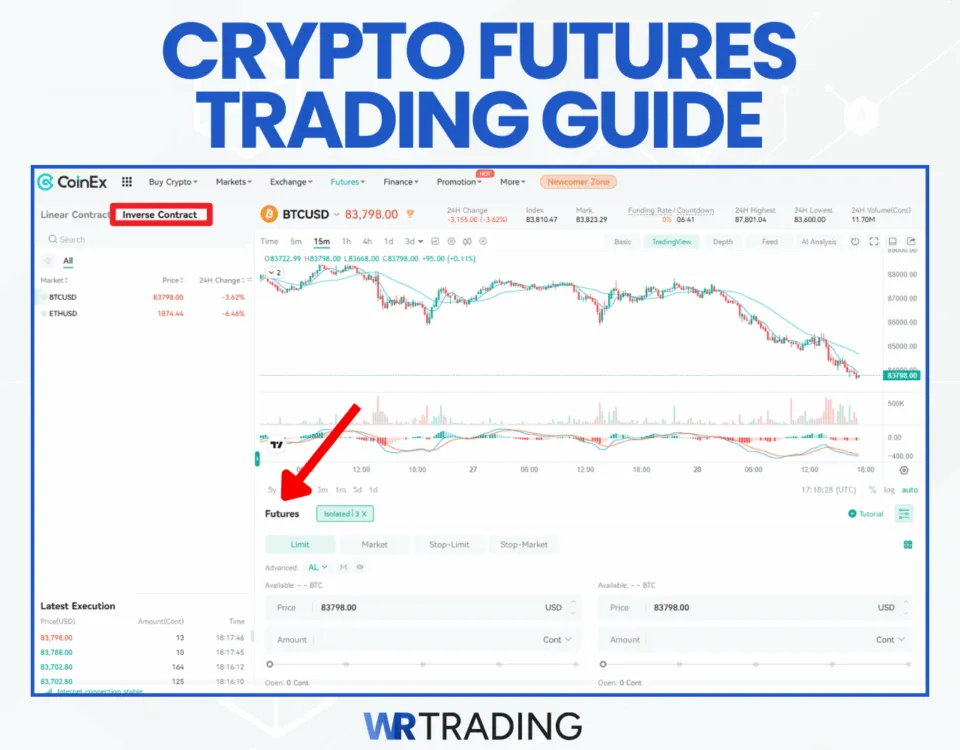
How to Trade Crypto Futures (quick guide):
How To Trade Crypto Futures:
Trading crypto futures requires more preparation and risk awareness than simple spot trading. It’s not just buying low and selling high—you’re managing margin, leverage, and funding costs all at once. This quick generic guide will show you the process of starting with an exchange and creating your first futures order.
1. Choose an Available Crypto Futures Platform / Exchange
Not all futures exchanges are the same. Some have better liquidity, lower fees, or more features like cross-exchange collateral. Here are three widely used platforms for crypto futures:
- PrimeXBT offers high leverage up to 200x, a clean interface, and also supports advanced trading tools for crypto futures. It’s accessible globally, but U.S. residents can’t officially use it. The broker offers the top market cap coins, and their fees are low compared to other exchanges.
- Bitget supports up to 125x leverage and offers copy trading, allowing beginners to follow experienced traders. The futures section is easy to navigate, monitoring trades, applying technical analysis, and reading the latest crypto updates is convenient on Bitget. However, U.S. access is limited due to regulatory concerns.
- Bitunix focuses heavily on crypto futures, offering a good mix of altcoins and low fees. It’s popular with Asian traders and is available in the United States. Users can receive various trading bonuses that can be applied to crypto futures trading.
Crypto Platform:
Leverage Crypto Futures:
Features:
Account:
1. PrimeXBT
Up to 1:500 on Crypto Futures
- Low Minimum Deposit: Only 0.001 BTC
- No KYC required for most account setups
- Multi-asset trading platform with crypto, forex, and commodities
- Trade more than 100 Cryptos with leverage
- Copy Trading Feature
2. Bitget

Up to 1:150 on Crypto Futures
- Easy Account Opening
- Fast Deposits / Withdrawals
- Deposit/Withdraw Fiat
- More Than 1,000 Cryptos
- Trading Bots, Copy Trading, Staking & more
- 24/7 Customer Support
- High liquidity and fast execution
3. Bitunix

Up to 1:125 on Crypto Futures
- No-KYC Exchange
- Fast Deposits / Withdrawals
- More Than 1,000 Cryptos
- Free Bonuses
- $10 Minimum Deposit
- 24/7 Customer Support
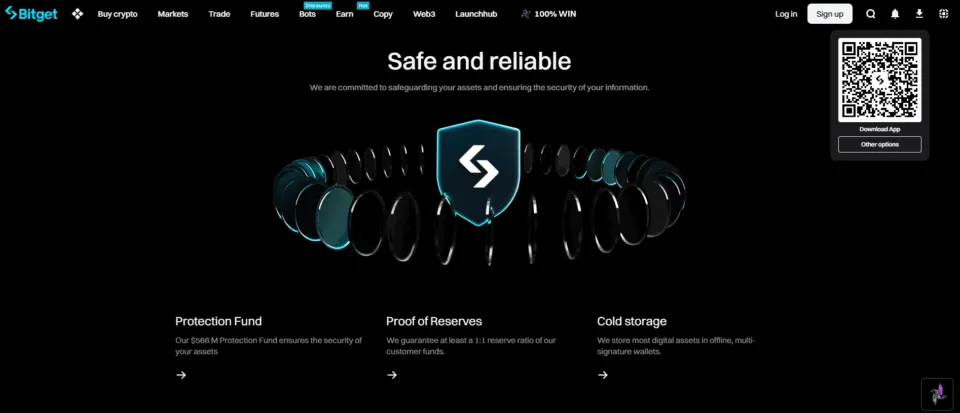
2. Sign Up for Your Crypto Futures Trading Account
Registration is usually quick – just provide an email and password. Then, verify your email via the link you’ll receive from the exchange in your inbox. Make sure to add all the security features to your account like white listing crypto wallets and adding 2FA.
3. Verification
Next, verify your identity, as your account will have restrictions until you comply with AML and KYC laws. Some platforms allow basic trading with no identity verification (KYC), but you’ll have lower withdrawal limits and fewer security options. Also, on most crypto exchanges, you are required to provide ID before having access to leverage.
4. Account Funding or Demo Account
Transfer funds into your account using your preferred payment method. Most futures platforms accept deposits in USDT, BTC, or other major cryptos. Bank transfers and credit card deposits are also popular methods that offer instant deposit times.
If you want to practice first, some exchanges offer demo accounts that simulate real trading with fake funds. This lets you test the exchange’s features and see if the platform is worth trading on.
5. Start Trading
Once your account is funded, you can open your first position. Here’s the step-by-step process, simplified:
- Open the Trading Interface: Head to the futures trading section of your exchange. This is often labeled as “Futures,” “Derivatives,” or just “Contracts,” depending on the platform.
- Choose the Trading Pair: Select the pair you want to trade, for example, BTC/USDT.
- Pick Order Type: You’ll see options like Market Order, Limit Order, or Trigger Order. Market orders execute instantly at the current price. Limit orders let you set your own price.
- Choose Long or Short: Now, decide if you believe the coin will go up or down in value and select the correct trade type. Long means you think the price will increase, while crypto shorting means you think the price will decrease.
- Set Leverage: Select your leverage level. This multiplies your exposure, profits, and losses. A 10x leverage means a $500 trade only requires $50 of your funds.
- Set Position Size: Enter how much you want to trade. Most platforms allow you to type in or use a slider to input how much of your portfolio to allocate.
- Set Stop Loss and Take Profit: To control risk, add a stop loss (the price where you’ll automatically exit if the trade goes against you) and a take profit (the price where you’ll automatically cash out profits).
- Confirm and Open the Position: Double-check the details, then hit the button to open the trade.
6. Withdrawal Profits
Once you’re done with the trade, you close the position manually (or automatically if you set limits). Profits can be withdrawn using the same payment method you used to deposit. Fees and processing speeds vary depending on whether you use fiat or crypto.
What Are the Pros and Cons of Crypto Futures?
Trading crypto futures involves potential risks, the benefits of which must be carefully weighed against:
Pros
- Can profit from rising and falling markets
- No need to own the actual cryptocurrency
- Access to leverage to amplify gains
- Ideal for short-term trading strategies
- 24/7 trading with global access
- Flexibility to trade multiple crypto pairs
- Available on many platforms with competitive fees
- No need to hold large crypto balances to start
- High liquidity on major pairs
- Platforms offer educational resources for beginners
Cons
- High risk of liquidation when using high leverage
- Funding rates can add up over time for perpetual contracts
- Not ideal for beginners
- High volatility can lead to unexpected liquidations
- Inexperienced traders often misuse leverage
- Most platforms offering high leverage have offshore regulatory statuses
- Must complete KYC to access leverage with crypto futures
- Learning curve is steeper than spot trading
- Smaller altcoin futures may lack liquidity, creating larger spreads
- Requires a higher margin during volatile periods
Which Types of Crypto Futures Exist?
There’s more than one type of crypto futures contract, and understanding these differences helps traders choose the best tool for their strategy. Some contracts are designed for long-term speculation, while others are built for short-term trading with no fixed end date. Therefore:
- Perpetual Futures Contracts
- Standard Futures Contracts
- Inverse Futures Contracts
Perpetual Futures Contracts
Perpetual futures are futures contracts that do not expire, allowing traders to hold positions indefinitely. Instead of settling at a set date like traditional futures, these contracts stay open until the trader closes the position. To keep the price of the perpetual contract close to the actual spot price, the exchange applies something called a funding rate – a small fee that’s paid between long and short traders every few hours.
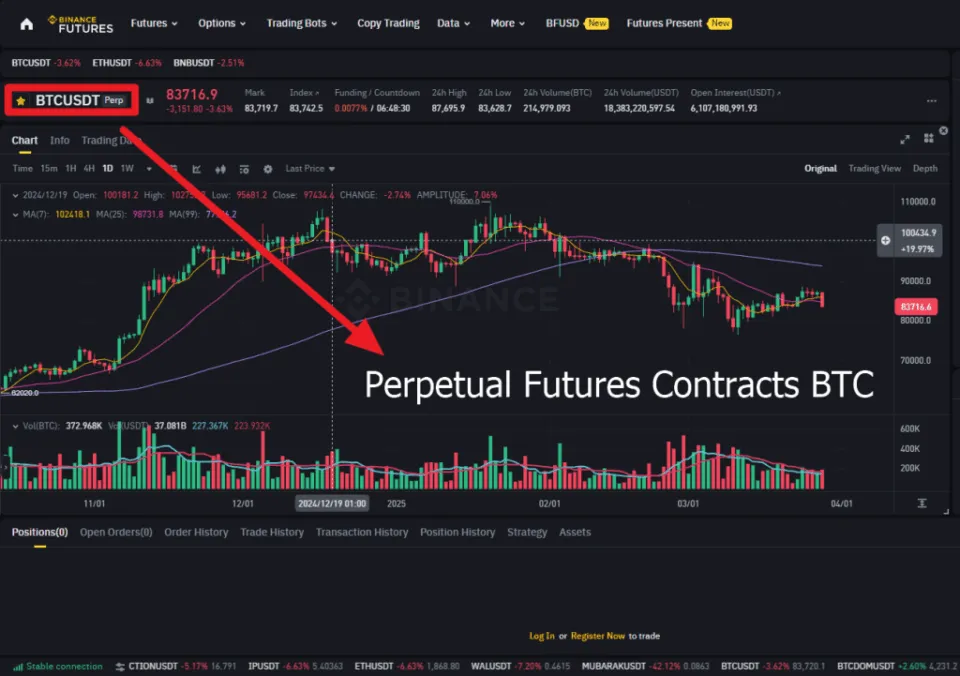
Perpetual contracts offer flexibility because they eliminate the need to roll over contracts every month. However, they also come with the risk of unpredictable funding rates, which can become expensive if you hold a position for days or weeks. Funding rates rise and fall based on market sentiment, so if the majority of traders are long, longs pay a fee to shorts and vice versa.
Standard Futures Contracts
Standard crypto futures work just like traditional futures contracts found in the stock or commodity markets. Each contract has a fixed expiration date, which could be weekly, monthly, or quarterly. When the contract reaches the expiry date, it either settles in cash or delivers the actual cryptocurrency, depending on the platform’s terms.
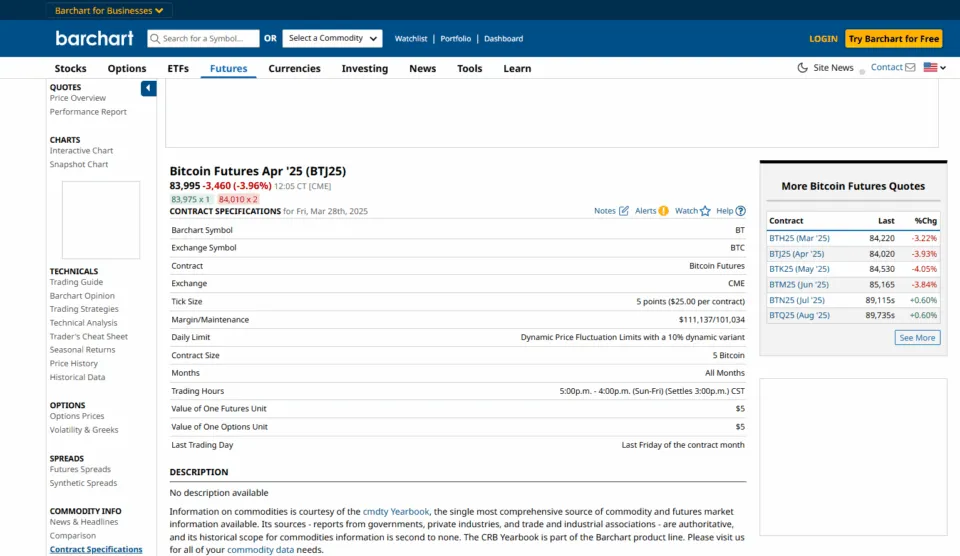
These contracts are often used by larger investors or institutions who want to lock in a price today to avoid future volatility. The downside is that liquidity tends to dry up close to expiration, which can cause erratic price movements. Standard futures often trade at a premium or discount to spot prices depending on market expectations, a concept called contango (higher than spot) or backwardation (lower than spot).
Inverse Futures Contracts
Inverse futures contracts use cryptocurrency as both the margin and settlement currency instead of fiat or stablecoins. For example, if you trade Bitcoin futures, your margin and profit/loss would be calculated directly in BTC, not USDT or USD.
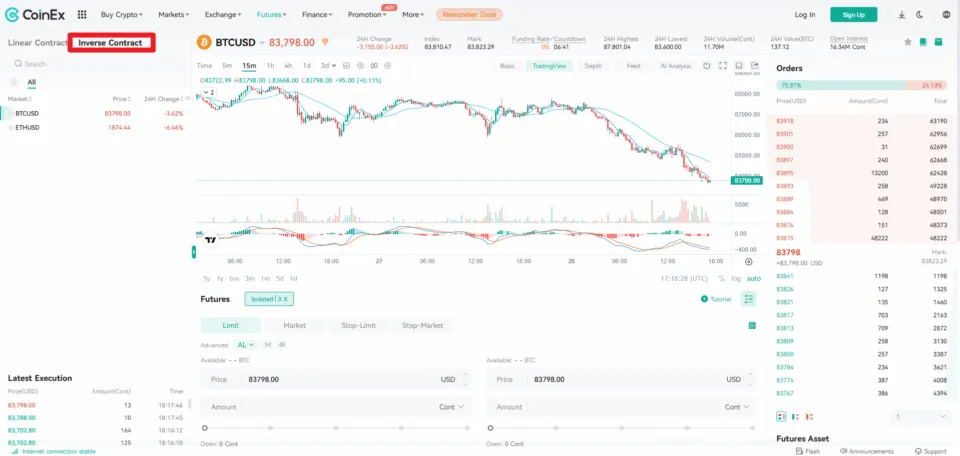
This is useful for traders who already hold cryptocurrency and want to hedge without converting it into fiat. However, this structure makes profit and loss calculations more complex since the value of your collateral fluctuates alongside your position.
What Are the Specifications of Crypto Futures?
In order to explain the specifications in detail, we have prepared an overview for your convenience:
| Specification | Information |
|---|---|
| Leverage | Ranging from 1:30 to 1:200 with most platforms allowing 125x leverage. |
| Contract Size | Each futures product specifies the exact amount of cryptocurrency per contract. A single BTC futures contract might represent 1 BTC or another fraction. |
| Spread | Represents the difference between the bid and ask prices. Tight spreads mean more efficient transactions, whereas wide spreads imply increased slippage and potential costs. |
| Margin Type | Choose between cross margin or isolated margin |
| Trading Hours | 24/7, unlike traditional futures markets that close on weekends. |
| Fee Structure | Maker/taker fees, commission, funding fees, withdrawal fees, all of which vary by platform |
How Does the Leverage on Crypto Futures Work?
Leverage in crypto-future trading allows traders to control positions larger than their actual investment by borrowing additional funds. This mechanism amplifies potential gains and losses, making it risky to use.
Consider Bitcoin priced at $100,000. With 10x crypto leverage, a trader can control one Bitcoin ($100,000) with an initial investment of $10,000. If Bitcoin’s price increases by 5% to $105,000, the trader’s position value rises to $105,000, yielding a $5,000 profit – a 50% return on the initial $10,000 investment. However, if Bitcoin’s price decreases by 5% to $95,000, the position’s value drops to $95,000, resulting in a $5,000 loss, which is also a 50% loss relative to the initial investment.
| Leverage | Margin Required | Risk Level |
|---|---|---|
| 5x | 20% of position size | Lower risk, slower gains/losses |
| 20x | 5% of position size | Moderate risk |
| 50x | 2% of position size | High risk |
| 100x | 1% of position size | Very high risk |
Cross vs Isolated Margin
There are two primary margin systems – cross margin and isolated margin. Each offering distinct approaches to collateral allocation and risk exposure.
Cross Margin
Cross margin utilizes the trader’s entire account balance to maintain all open positions. This means that profits from one position can offset losses in another, reducing the likelihood of immediate liquidation. However, it also implies that significant losses in a single position can deplete the entire account balance, affecting all other positions. This approach is often favored by experienced traders who employ hedging strategies and seek to optimize capital efficiency across multiple trades.
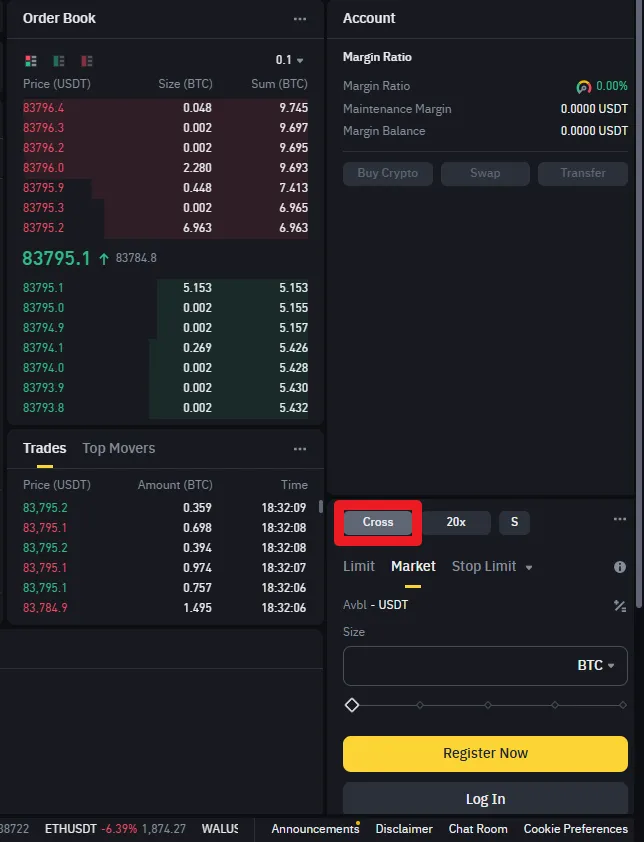
Isolated Margin
Isolated margin confines the collateral to a specific position, limiting the potential loss to the margin allocated for that particular trade. If the market moves unfavorably, only the funds designated for that position are at risk, leaving the rest of the account balance unaffected. This method offers precise control over individual trades and is particularly beneficial for traders who prefer to manage risk on a per-position basis.
How Are Crypto Futures Regulated?
Crypto futures regulation is inconsistent, varying widely across different countries. In the U.S., crypto futures fall under CFTC oversight, meaning platforms offering these products to U.S. residents must meet strict compliance standards. This includes transparent pricing, segregation of client funds, and clear risk disclosures.
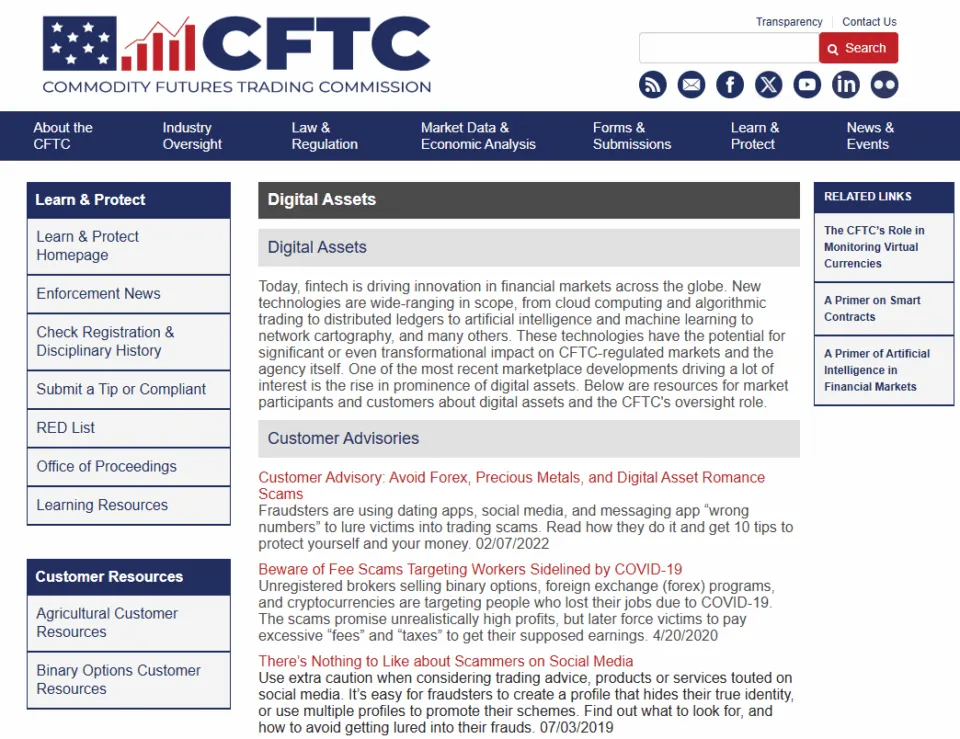
In Europe, crypto futures can fall under either MiFID II rules for derivatives trading or ESMA restrictions if offered to retail traders. Some jurisdictions, like Germany or France, have additional licensing requirements. Platforms operating offshore – like many popular futures exchanges – often avoid these stricter rules, making access easier but reducing legal protections for users.
Where Are Crypto Futures Banned?
Certain countries restrict or outright ban crypto futures trading, especially for retail traders. Some of the most notable bans include:
- China – All crypto trading, including futures, is officially banned.
- South Korea – Derivatives trading is heavily restricted for retail investors.
- India – Regulatory uncertainty creates confusion, with futures trading technically unregulated but often blocked by banks.
- Turkey – Recent regulations tightened control over all crypto trading, including futures.
- Afghanistan – Cryptocurrencies and trading activities have remained banned here since 2022 due to Taliban rule.
What Are the Risks of Crypto Futures?
Crypto futures carry many risks that traders should understand before getting involved. It is easy to focus on potential profits, yet it is just as important to be aware of the possible pitfalls that can lead to large losses.
- Volatility
- Exchange Counterparty Risk
- Liquidity Gaps
- Regulatory Actions
- Leverage Liquidations
- Emotional Traps
- Funding Rate Costs
Volatility
When using futures, volatile conditions become even riskier because of leverage. A small price move against your position can trigger liquidations that wipe out your margin. It is wise to keep an eye on price charts, use stop-loss orders, and avoid overextending yourself on trades when you see signs of extreme market swings.
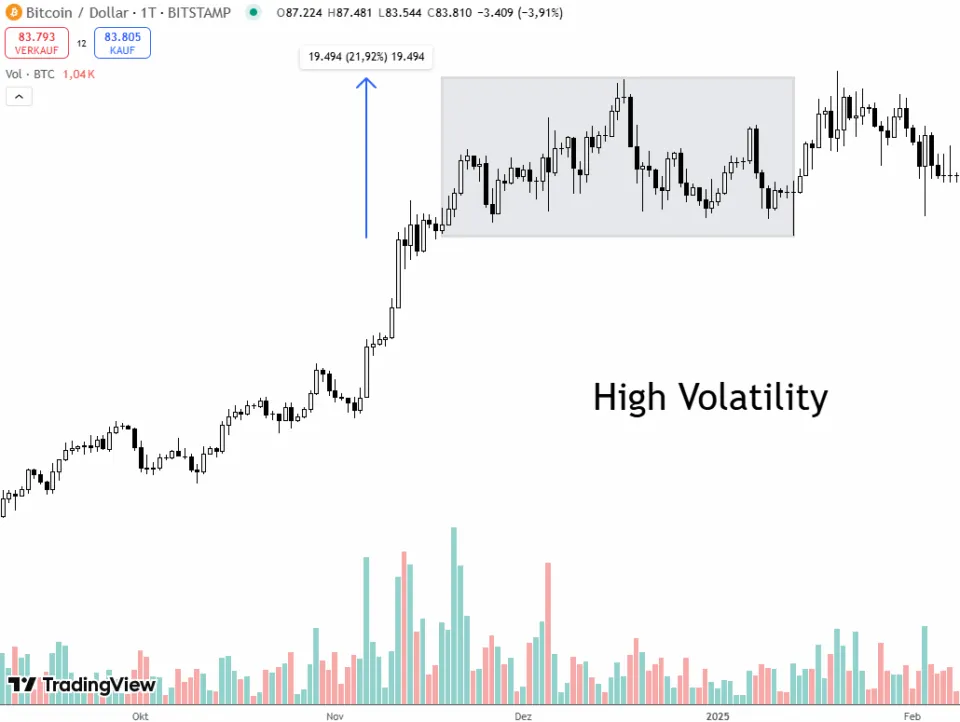
Exchange Counterparty Risk
Crypto futures often depend on a centralized trading platform that acts as the middle party for every trade. If the exchange suffers a hack, faces financial troubles, or mismanages user funds, you could lose access to your balance or positions. This sort of event has happened in the past, so it should not be dismissed as a minor concern.
Liquidity Gaps
Liquidity measures how easily you can enter and exit positions without causing noticeable price movements. Thin order books can lead to slippage, meaning your trade fills at a worse price than you expected. Wide spreads between bids and asks may also reduce your ability to execute large trades at stable prices.
When markets turn volatile, even contracts that normally have good liquidity can see sudden gaps. This can force unexpected losses on traders who need to exit quickly.
A good approach is to check the average daily volume of the futures contract you plan to trade, and to use limit orders if you want better control over your fill price.
Regulatory Actions
Laws around crypto can shift at any time, and that unpredictability might affect your open positions. A government could decide to impose new rules on leverage limits or even ban certain types of derivatives. This sort of sudden policy change can make it harder to trade, raise fees, or reduce the number of available contracts.
Leverage Liquidations
Leverage multiplies your buying or selling power, and while this can amplify gains in your favor, it can also increase losses. If the market goes against you, a small move can push your account toward liquidation. This is one of the biggest hazards of trading futures.
Emotional Traps
Human emotion often plays a big part in trading outcomes. You might be tempted to chase losses by increasing leverage after a bad trade or get greedy and hold onto a winning position for too long in hopes of more gains. Emotional reactions can override logic and lead to impulsive decisions.
Funding Rate Costs
Perpetual futures do not have an expiration date, but they rely on a funding rate to keep contract prices aligned with the spot market. When your side of the trade is paying the funding rate, the costs can pile up over time. This ongoing expense might eat into your profits or make a losing position even worse.
What Are the Costs of Crypto Futures?
The fees and charges you face vary, so it helps to know about them before you start. Let’s go over the costs you may encounter when trading cryptocurrency futures.
- Trading Fees (Maker/Taker): These fees apply whenever you open or close a position. They often follow a maker-taker model, where you pay a lower fee if you provide liquidity (maker) and a higher fee if you take liquidity from the order book (taker). Frequent trading raises these costs, so it’s good to check fee schedules and possibly adjust your style or order types to pay less.
- Funding Rates: Perpetual futures use funding rates to stay close to the spot price of the underlying asset. If your position is on the side that pays this rate, you must pay regular fees that can add up over time. Monitoring the funding rate is key, especially if you hold trades for many days and want to protect your gains.
- Spreads: The spread is the difference between the best bid and best ask on an order book. Wider spreads mean you might enter a position at a less favorable price right away, which can reduce your profit potential. If you often rely on market orders, consider looking at how wide the spread usually is to avoid unexpected cost increases.
- Overnight or Rollover Charges: Some exchanges apply overnight charges on futures positions, especially for higher-leverage trades. These charges can vary based on market conditions, so it’s good to see if your chosen platform has a schedule or formula for these fees. Over time, these costs add up and cut into your overall returns.
- Withdrawal Fees: Withdrawing funds from your exchange account to a personal wallet often involves a fee that can be flat or tied to network usage. These fees might also change depending on the cryptocurrency you’re moving. Checking withdrawal costs in advance can prevent a surprise when you decide to cash out your profits.
- Margin Interest or Borrowing Fees: Leverage usually involves borrowing funds, and some platforms pass on an interest charge or borrowing fee to the trader. This expense can be easy to overlook if you only focus on standard trading fees. If you hold a position for weeks, these charges might grow to a point where they have a real effect on your bottom line.
- Inactivity Fees: A few platforms charge users who do not trade or log in for a specific period. This can slowly eat away at any balance you still have on the exchange. Reading the fine print about inactivity policies helps you avoid such fees or at least stay informed if you plan to step away from trading for a while.
Best Strategies to Trade Crypto Futures:
Traders use different strategies for crypto futures based on time commitments, risk tolerance, and personal preferences. Three popular approaches are Day Trading, Swing Trading, and Position Trading. Each one requires distinct skills and focuses on a different time period. The aim here is to outline these methods, show how they work, and highlight their advantages and downsides.
1. Day Trading
Day trading involves entering and exiting positions on the same day, so traders rarely leave open trades overnight. This style tries to capture small intraday price moves, which can still produce meaningful results in a volatile market like crypto. Practitioners often rely on technical indicators, chart patterns, and news events that might trigger quick price swings.
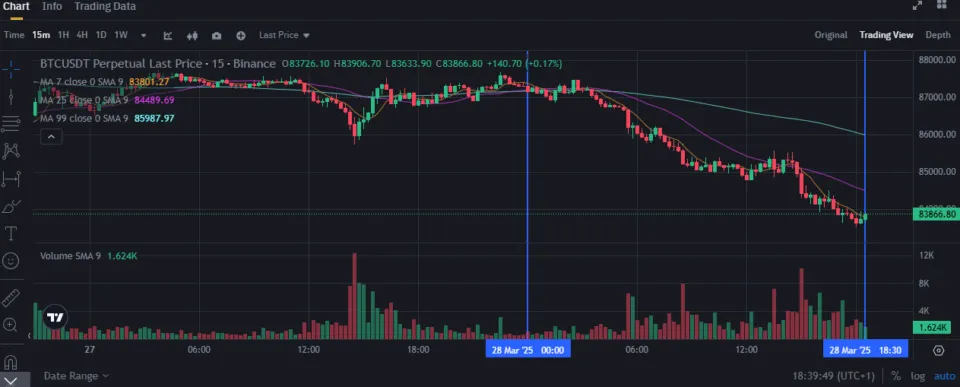
The fast-paced nature of day trading can be exciting and stressful. You need to react quickly to changing conditions, and each mistake can show up in your bottom line very quickly. Many day traders use leverage to boost their gains on small moves, which also increases the risk of liquidation. A disciplined mindset, strict rules for when to enter or exit, and a practical knowledge of order types can help reduce the odds of big losses.
Pros
- Avoids overnight fees
- Quick feedback loop helps refine trading methods within a shorter time frame
- Immediate price data is easy to follow via real-time charts and news feeds
- Suits individuals who have a few hours to focus on short-term moves each day
- Stops can be tighter, aiming to limit big drawdowns on individual trades
Cons
- Demands continuous monitoring, which can lead to stress and fatigue
- Requires fast decision-making, leaving little room for second-guessing or in-depth analysis once trading begins
- Spreads and commissions can accumulate rapidly with frequent entries and exits
- A single large loss can offset several smaller wins if risk controls are not solid
- News spikes may lead to slippage if you enter a position right before a major announcement
2. Swing Trading
Swing trading focuses on broader moves that can develop over several days or weeks rather than minutes or hours. Traders in this style combine technical analysis with a basic awareness of overall market sentiment, looking for entries when they see a change in momentum or a major breakout. Since trades last longer, participants open fewer positions than day traders, which can help save on fees. However, overnight funding costs might still apply if you trade perpetual contracts.
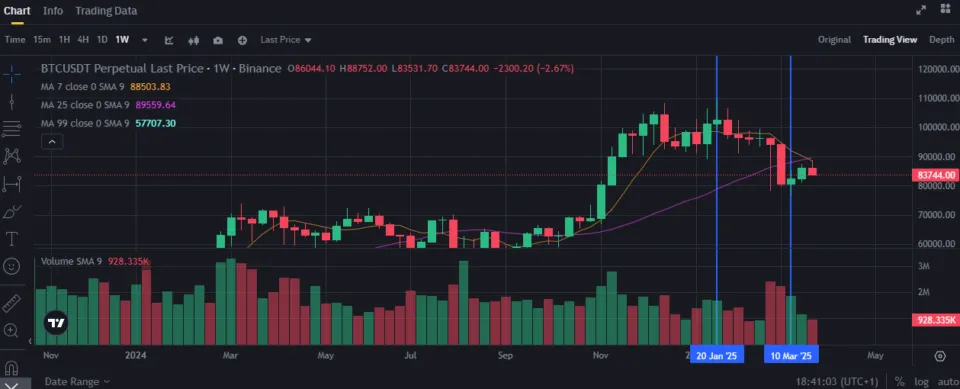
Many swing traders look to ride a trend over multiple days, aiming for bigger gains per trade. This approach can be less stressful because you do not have to monitor every tick. On the other hand, markets can shift during weekends or after major news releases, which may cause a strong move against your position. Successful swing traders usually balance patience and caution, adjusting stop-loss levels to avoid getting knocked out by normal price fluctuations.
Pros
- Reduces the need to watch charts every minute, making it more flexible for part-time traders
- Less frequent trades can mean lower cumulative trading costs compared to day trading
- Allows for more in-depth analysis of chart patterns and market fundamentals
- Trades can be planned around significant technical signals, like breakouts or moving average crossovers
- Crypto futures have high volatility over long periods
Cons
- Overnight holds might rack up funding fees, especially if a position lasts longer than expected
- Some trades might tie up your capital for long stretches
- If trends shift mid-trade, you may face a slow bleed in value unless you react quickly
- False breakouts or trend reversals can still trap you, requiring extra caution and risk management
- Emotional discipline is needed to avoid closing positions too soon or holding them too long
3. Position Trading
Position trading aims to capture major market moves over weeks, months, or even longer. This style is often based on a bigger-picture outlook of the market, taking into account long-term trends and adoption patterns. Traders in this category open fewer positions than either day or swing traders, and they rely on the idea that patience can lead to more significant gains if they catch a correct trend. However, leveraged positions over long periods can be costly if the funding rates are high.
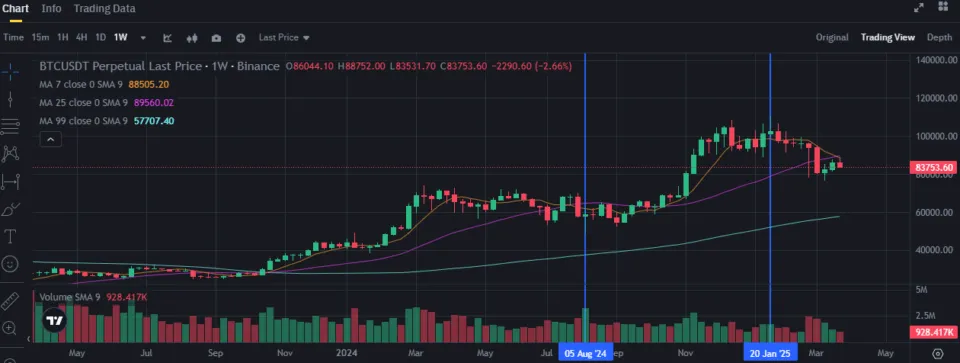
Position traders are less concerned with short-term volatility because trades stay open for so long. However, they need to keep an eye on serious market shifts. News or regulations can change the direction of a long-term trend in ways that can be hard to predict. It is also important to manage the potential impact of holding a leveraged position for extended intervals. Careful consideration of margin and possible drawdowns helps avoid liquidation if the market experiences a major temporary drop.
Pros
- Targets big market swings that can yield significant returns over time
- Fits people who prefer a slower pace and have confidence in long-range views
- Allows analysis of big-picture factors, like overall market adoption or macroeconomic indicators
- If you pick the right moment, you can capture strong uptrends from their early stages
- Less intense compared to short-term trading styles
Cons
- Long holding periods can lead to high funding or interest costs on leveraged trades
- Sudden news or regulatory changes can disrupt long-term positions and cause major swings in value
- Potential missed opportunities in other assets while your capital is committed to one trade for long periods
- A sudden liquidation event can be devastating if you use high leverage and don’t monitor key price levels
- Difficult to predict future prices without having an understanding of technical analysis
Learn the Best Trading Strategies With WR Trading
WR Trading offers educational resources to help beginners and experienced traders understand various methods for analyzing cryptocurrencies and forex trading. The platform presents guides, market commentary, and an environment where users can learn without feeling overwhelmed. Most of the material is structured in a way that starts with the fundamentals and then gradually introduces complex topics such as advanced chart patterns or macroeconomic influences on digital assets.
WR Trading encourages users to engage with practical exercises or simulation tools that mimic market conditions. This hands-on perspective can make it easier to transition from theoretical knowledge to real-world application. While no single program can guarantee profitability, the consistent use of well-designed resources can significantly improve someone’s ability to interpret market signals, manage trades, and adopt strategies that align with personal objectives. Consider joining now and taking your crypto futures trading to the next level.
Conclusion: Crypto Futures Are a Good Way to Get Leverage on Cryptocurrencies
Leverage through crypto futures can allow traders to manage larger positions and generate substantially more profits. This flexibility extends beyond what is possible in spot markets, which often do not provide a convenient way to profit from downward price movements or offer the same range of margin capabilities. At the same time, trading futures requires respect for the potentially higher risk profile, which is an inherent part of leveraged investments.
Anyone looking to step into this space should ensure they have a solid understanding of how different contracts function, the platforms they plan to use, and the relevant regulations. Consider joining the WR Trading course to learn the fundamentals or use your exchange’s demo account with educational resources to get started.
Frequently Asked Questions on Crypto Futures:
Are Crypto Futures Riskier Than Spot Trading?
Crypto futures carry more risk because of leverage. Even minor price movements can cause significant outcomes when margin is used. Spot trading does not involve the same kind of margin calls or liquidation, which can make it simpler but also less flexible.
How Do I Pick the Best Leverage Level?
The ideal leverage level depends on individual risk tolerance, market conditions, and how much time you spend monitoring positions. Traders who are new or risk-averse might start with lower leverage, such as 2x or 3x, to avoid rapid liquidation. More advanced traders could use higher multipliers, but only if they have thorough strategies and strict stop-loss mechanisms in place.
Why Do Some Countries Ban Crypto Futures While Allowing Spot Trading?
Certain regulators believe that derivatives like futures are too complex and volatile for general consumers. They worry about excessive leverage leading to abrupt and large losses. Spot markets do not involve margin, so they are often viewed as less risky from a policy standpoint.
Do I Need Special Software to Analyze Futures Charts?
Most platforms provide their own charting tools, and many are robust enough for detailed technical analysis. Some traders also use third-party software or websites that offer more advanced features, such as custom indicators.
What Should I Consider When Picking a Crypto Futures Exchange?
Look at factors like fees, liquidity, leverage, regulatory standing, and user reviews. Also, think about how friendly the interface is for your skill level, and research the exchange’s history of security measures.


